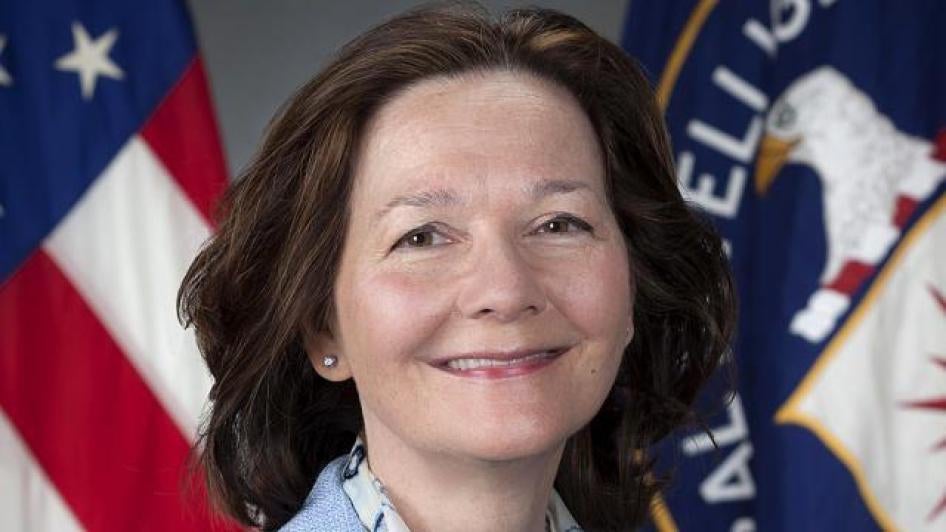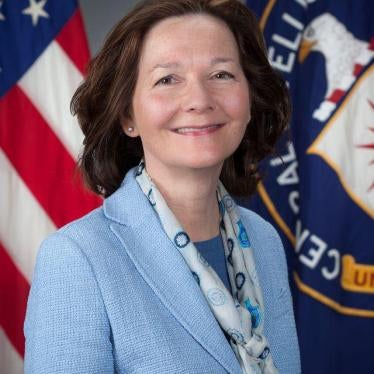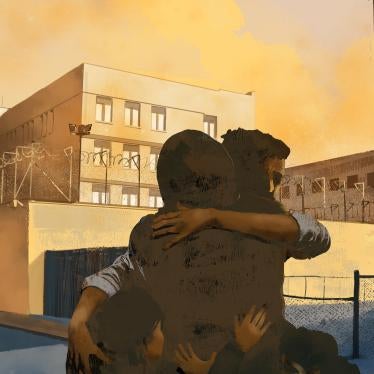Much concern has been raised, for good reason, about President Trump’s nomination of Gina Haspel to head the Central Intelligence Agency. Haspel allegedly was involved in reckless, illegal torture under the agency’s “rendition, detention and interrogation” program.
Since records remain classified, the full extent of Haspel’s involvement is not clear. The New York Times reports she ran the CIA’s first “black site” in Thailand when one detainee, Abd al-Nashiri, was severely tortured there. She also appears to have played a key role in pressing for and ultimately destroying videotapes of the torture of another detainee, Abu Zubaydah, whose detention at the same site began before she arrived.
One section of a Senate Intelligence Committee summary of a much larger classified report describes the CIA’s torture of Zubaydah to the point of near death: “In at least one waterboarding session, Abu Zubaydah ‘became completely unresponsive, with bubbles rising through his open, full mouth.’” The CIA discussed what to do if Zubaydah died and how to make sure no one learned what the CIA did to him. “In light of the planned psychological pressure techniques to be implemented, we need to get reasonable assurances that [he] will remain in isolation and incommunicado for the remainder of his life,” a CIA cable read.
The CIA’s apparent hopes that Abu Zubaydah’s treatment would never see the light of day is one likely reason why Jose Rodriguez, head of the CIA clandestine service at the time, ordered 92 video tapes of CIA interrogations destroyed. Rodriguez claims this was done solely to keep CIA agents’ identities confidential.
The government continues to keep classified many facts related to the CIA’s torture program, making it difficult to attribute to specific officials responsibility for incidents of torture or oversight of it. But it is clear that Haspel held a senior role at the CIA, and at a “black site,” during the height of the agency’s torture program.
Glenn Carle, a former undercover CIA operative who was involved in interrogating a suspected al Qaeda detainee, described her as “one of the architects, designers, implementers and one of the top two managers of the [CIA interrogation program].” Former CIA general counsel John Rizzo, in his book, “A Company Man,” describes Haspel as having “run the [CIA] interrogation program.”
Rizzo also says in his book that Rodriguez and Haspel were “the staunchest advocates inside the [CIA] for destroying the tapes.” Rodriguez, in his book, “Hard Measures,” says that Haspel drafted the order, which Rodriguez signed even though Rizzo says he had told him not to do so without approval.
If this much is correct — that Haspel was heavily involved in running the torture program and destroying evidence of it — this is enough to disqualify her from heading the CIA. True, the Justice Department signed off on the program, and others in higher positions at the CIA made the decisions to carry it out. But the culpability of other senior officials doesn’t absolve her of responsibility.
The torture program clearly was inhumane. Many CIA professionals are reported to have taken stands against it, reported their concerns, or refused to carry out orders. The “enhanced interrogation techniques” were just the tip of the iceberg. There also was long-term incommunicado detention in unsanitary conditions, unlawful rendition, forced nudity, food deprivation and diapering, among other things.
Haspel should not be confirmed to head the CIA even if she is “a consummate professional,” as some CIA colleagues have described her, or “a good deputy director” this past year, as Sen. Dianne Feinstein (D-Calif.) said. It’s fine to weigh these positives when considering someone for a position, but they cannot possibly outweigh the negatives associated with a record that includes running a program that was illegal under both U.S. and international law.
Failing to promote her to head the CIA would not be punishment, as some have claimed. Despite this huge black mark, she already has ascended to great heights within the agency.
Some U.S. senators such as Rand Paul (R-Ky.), Ron Wyden (D-Ore.) and Mark Heinrich (D-N.M.), have expressed their opposition to Haspel’s nomination. Others, such as Feinstein, are reserving judgment but demanding more information be made public about Haspel’s role in the program prior to her confirmation hearing.
The public has a right to know more about this dark chapter in U.S. history. Without declassification, senators cannot ask important questions about Haspel’s record because her answers would be classified. Among these questions: Was she responsible for “management failures” that the CIA itself has described? Were these failures related to detainee abuse, or conditions of detention? Did she discipline officers for their conduct? Did she raise concerns about aspects of the program? Did she play a role in inflating reports of the intelligence gained from the program, which the CIA also has acknowledged?
Other questions, such as whether she would ever use such techniques again and if she believes they were illegal, could be asked in a public setting. But even if Haspel disavows torture, it wouldn’t come close to erasing concerns to a degree that would favor confirmation. Promoting someone who made such profound errors in judgment to the senior position in an important and powerful agency, at a time when the president has himself supported the use of torture, sends the message to other U.S. government officials — and to the world — that fundamental violations of the law will be rewarded and that impunity in the United States is the order of the day.








